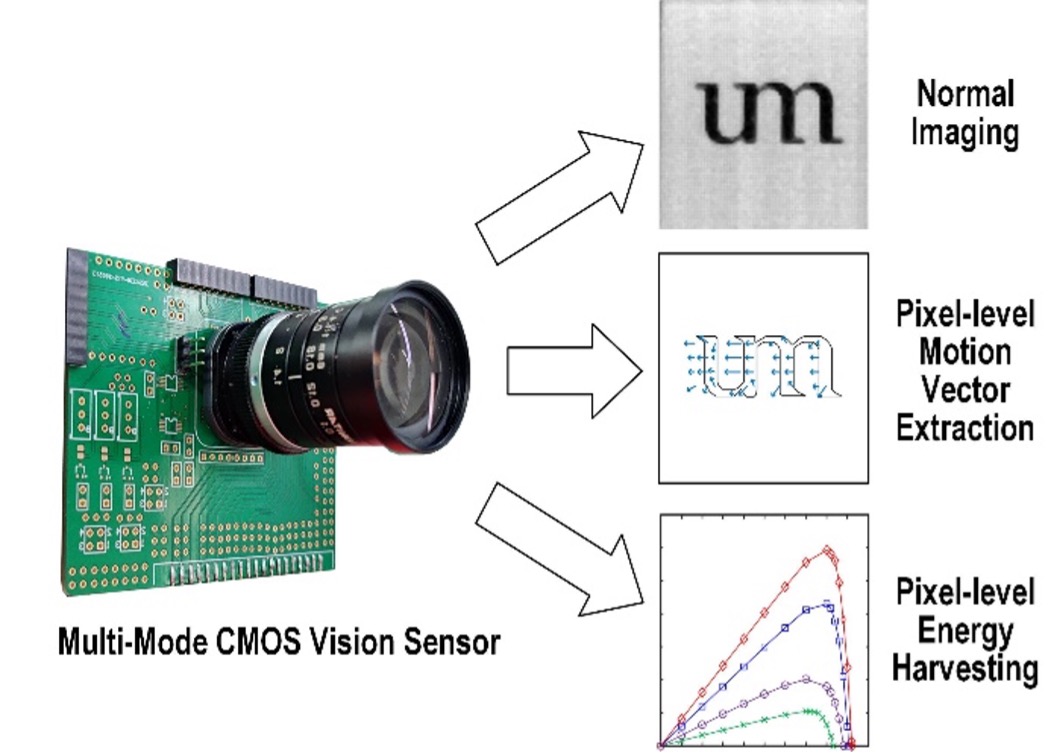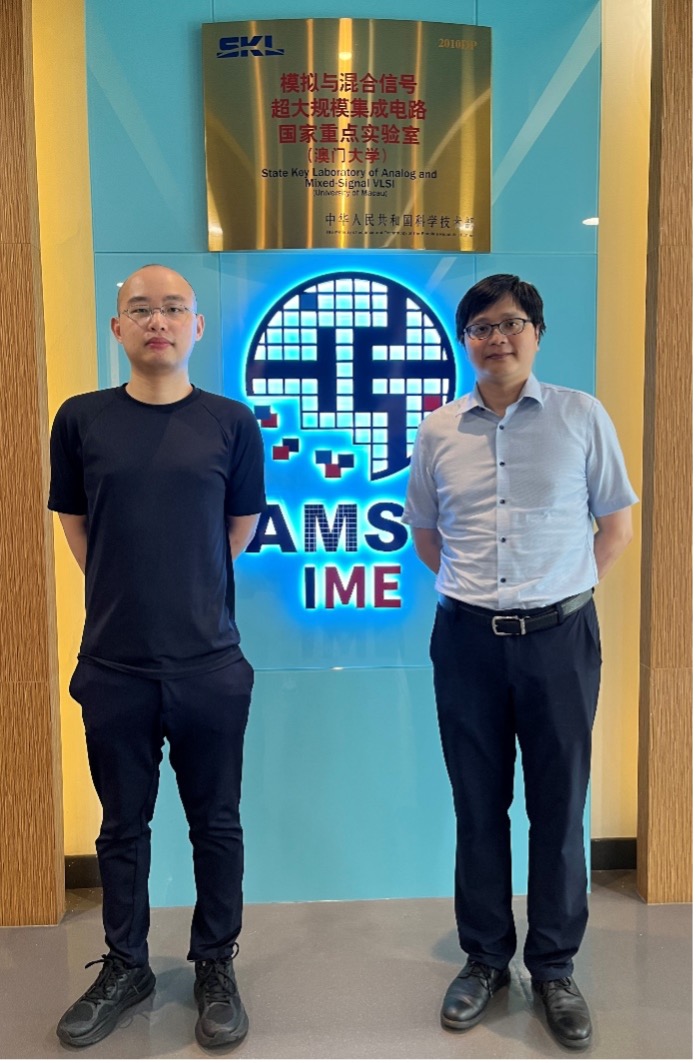Wu Jiangchao, a PhD student in the Department of Electrical and Computer Engineering, Faculty of Science and Technology, University of Macau (UM), and a research team led by his supervisor Law Man Kay, associate professor in UM’s Institute of Microelectronics, have developed the first multimode CMOS vision sensor chip which not only enables efficient optical flow extraction of moving objects but also achieves uninterrupted solar energy harvesting. The chip can reduce data bandwidth requirement while improving energy efficiency and lowering maintenance costs. The research result has been published in the well-known international journal IEEE Sensors Journal and will serve as an important reference for the future development of self-powered image sensor systems.
Ubiquitous wireless sensor nodes play an important role in future internet of things applications, with visual perception being the most important sensing domain in various monitoring scenarios. To fulfill the trend of continuous environment monitoring with emerging technologies such as artificial intelligence, intelligent transport, and indoor/outdoor monitoring, a multimode CMOS vision sensor with on-chip motion direction detection and energy harvesting capabilities can reduce the data bandwidth requirement of these devices while improving their energy efficiency, effectively relaxing the maintenance costs associated with frequent battery replacement.
Titled ‘A Multimode CMOS Vision Sensor With On-Chip Motion Direction Detection and Simultaneous Energy Harvesting Capabilities’, the study proposes an energy-efficient and lightweight optical flow algorithm for on-chip motion direction detection. It utilises vertically stacked photodiodes for independent imaging and energy harvesting, effectively breaking the bottleneck in the conventional pixel-level photodiodes reconfiguration approach while improving the achievable spatial resolution and energy harvesting efficiency. Fabricated in the standard size of CMOS (0.18-µm), the chip prototype has a pixel size of only 4.75µm. This is also the first CMOS vision sensor that has achieved motion direction detection and energy harvesting at the pixel level.
Prof Law is the paper’s corresponding author and Wu is the first author. PhD student Lu Xin, Prof Yang Jiang, Prof Liu Liyuan, Prof Mak Pui In, and Prof Rui Martins also made important contributions to the study. The project was funded by the Science and Technology Development Fund of Macao (File no: 148/2020/A3, 011/2019/APJ, 069/2016/A2, SKL-AMSV(UM)-2020-2022) and University of Macau (File no: CPG2022-00011-IME).
To view the full version of the paper, please visit: https://ieeexplore.ieee.org/stamp/stamp.jsp?arnumber=9789972
| Source: Faculty of Science and Technology | |
| Media Contact Information: | |
| Communications Office, University of Macau | |
| Albee Lei | Tel: (853) 8822 8004 |
| Cathy Cheang | Tel: (853) 8822 8009 |
| Email: | prs.media@um.edu.mo |


